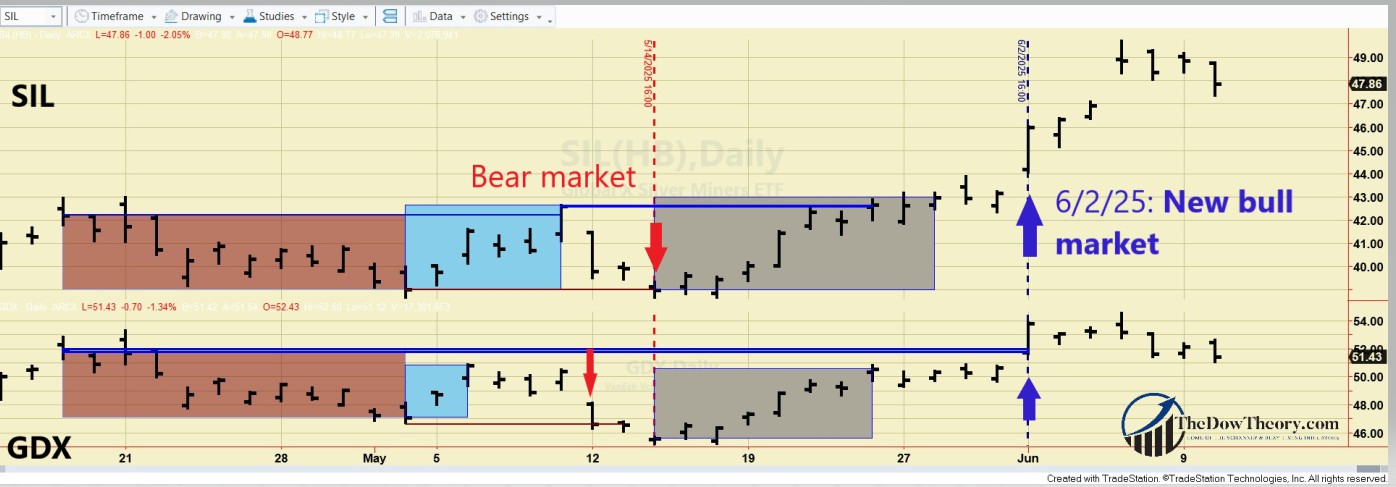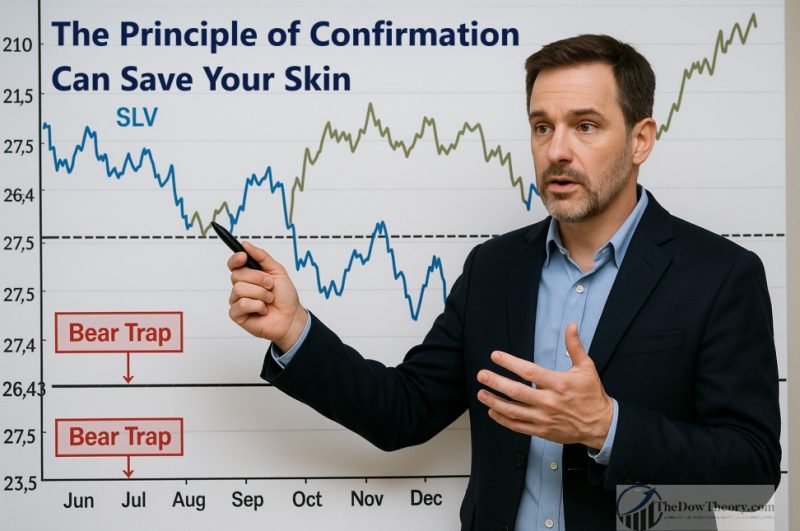
Overview: The precious metals landscape has turned very bullish. Gold, silver, platinum, and even base metals like copper are trending strongly upward. GDX and SIL are no exception to this new trend.
General Remarks:
In this post, I provide an in-depth explanation of the rationale behind employing two alternative definitions to evaluate secondary reactions.
SIL refers to the Silver Miners ETF. More information about SIL can be found HERE.
GDX refers to the Gold Miners ETF. More information about GDX can be found HERE.
A) Market situation if one appraises secondary reactions not bound by the three weeks and 1/3 retracement dogma.
As I explained in this post, the trend was signaled as bearish on 12/18/24.
In a clear case of whipsaw, no sooner had the bear signal been triggered than GDX and SIL staged strong rallies, breaking above their previous bull market highs (5/9/25 for SIL at 42.57 and 4/16/25 at 51.91 for GDX). This confirmed breakout occurred on 6/2/25 and shifted the trend to bullish.
The chart below displays the most recent price action. The brown rectangles show the last secondary reaction. The blue rectangles display the rally that set up both ETFs for a primary bear market signal. The red horizontal lines highlight the secondary reaction lows, whose breakdown signaled the end of a primary bear market, and the blue horizontal lines indicate the last recorded primary bull market highs, whose breakup signaled a new primary bull market. The grey rectangles show a bounce that did not meet the time requirement to qualify as a secondary reaction.

So, the primary and secondary trends are bullish.
B) Market situation if one sticks to the traditional interpretation demanding more than three weeks and 1/3 confirmed retracement to declare a secondary reaction.
As I explained in this post, the primary trend was signaled bullish on 3/13/25.
The most recent current drop did not last at least 15 trading days on both ETFs, so there was no secondary reaction, and hence, no change of trend.
Higher confirmed highs have reconfirmed the primary bull market.
Therefore, the primary and secondary trends remain bullish.
Recent price action underscores the importance of analyzing the trend using two alternative time frames. The shorter-term time frame was whipsawed, while the longer-term time frame remained bullish throughout.
Sincerely,
Manuel Blay
Editor of thedowtheory.com




